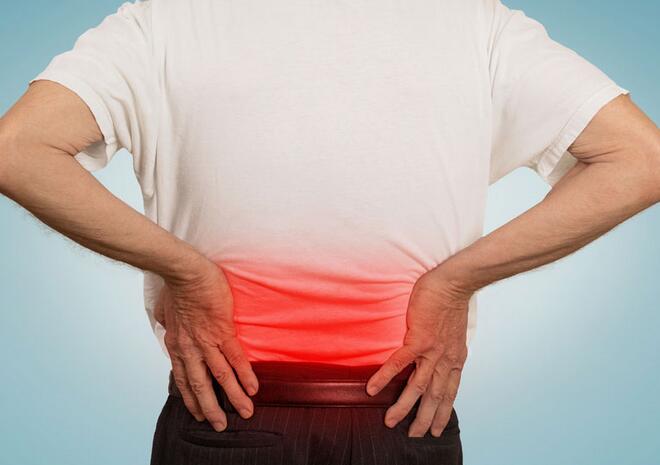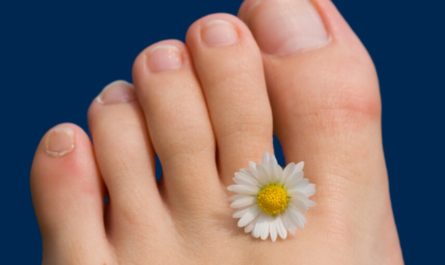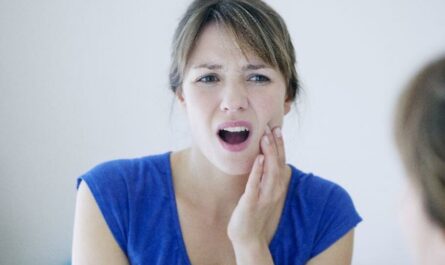Back pain is a common complaint, affecting millions of people worldwide. While there are many potential causes of back pain, one particularly debilitating condition is a pinched nerve in the back. A pinched nerve occurs when too much pressure is applied to a nerve by surrounding bones, cartilage, muscles, or tendons. This will disrupt the nerve’s ability to function properly.
A pinched nerve can result in a range of symptoms, from mild discomfort to severe, radiating pain, numbness, and weakness. In this article, we’ll explore 12 common causes of a pinched nerve in the back. This can help you better understand this condition and when to seek medical attention.
Symptoms of Pinched Nerve in Back
The symptoms of a pinched nerve in the back can vary depending on the location and severity of the nerve compression. Common symptoms include:
- Radiating pain: Pain that travels from the back into the arms, legs, or other areas of the body. This pain can range from a dull ache to a sharp, shooting sensation.
- Numbness or tingling: A pins-and-needles sensation or loss of feeling in the areas supplied by the compressed nerve. This can occur in the arms, legs, or other areas.
- Muscle weakness: Difficulty moving or using the muscles supplied by the affected nerve. This can manifest as weakness in the arms, legs, or other areas.
- Burning or sharp pain: Intense, localized pain in the area of the pinched nerve. This pain can be constant or intermittent and may be exacerbated by certain movements or positions.
In addition to these symptoms, some individuals may also experience muscle spasms, loss of coordination, or difficulty with bladder or bowel control in severe cases.

Pinched Nerve in the Back
12 Common Causes of a Pinched Nerve in the Back
Common causes of a pinched nerve in the back include:
1. Herniated or Bulging Disc
One of the most common causes of a pinched nerve in the back is a herniated or bulging disc. The spine is made up of vertebrae separated by cushioning discs filled with a soft, jelly-like substance. When these discs become damaged or degenerate over time, the inner material can bulge or rupture, putting pressure on the nearby nerves.
Herniated discs can occur due to various factors, including age-related degeneration, injury, or repetitive strain. As the disc material protrudes outward, it can impinge on the spinal cord or nerve roots. This will lead to a pinched nerve and associated symptoms like radiating pain, numbness, and weakness.
2. Spinal Stenosis
Spinal stenosis is a condition in which the spinal canal narrows, compressing the spinal cord and nerve roots. This narrowing can be caused by various factors, including age-related changes, bone spurs, herniated discs, or thickened ligaments. As the space for the nerves decreases, it can lead to a pinched nerve and associated symptoms.
Spinal stenosis is particularly common in the lumbar (lower back) and cervical (neck) regions of the spine. Symptoms may include pain, numbness, or weakness in the legs or arms, depending on the location of the nerve compression.
3. Bone Spurs
Bone spurs, also known as osteophytes, are bony growths that can form on the vertebrae or other bones in the spine. These spurs can protrude into the spinal canal or intervertebral foramen, compressing the nerves and causing a pinched nerve.
Bone spurs are often the result of osteoarthritis or other degenerative conditions that affect the joints and bones of the spine. As the body attempts to repair damage or compensate for instability, these bony growths can develop and encroach on the surrounding nerves.
4. Degenerative Disc Disease
As we age, the discs in our spine can degenerate and lose their cushioning ability. This condition, known as degenerative disc disease, can lead to the discs becoming thinner and less effective at absorbing shock, increasing the risk of a pinched nerve.
In addition to disc degeneration, this condition can also cause the formation of bone spurs and other changes that can contribute to nerve compression. Degenerative disc disease is a common age-related condition, but it can also be exacerbated by factors like injury, obesity, and poor posture.
5. Spondylolisthesis
Spondylolisthesis is a condition in which one vertebra slips forward or backward over the adjacent vertebra. This misalignment can narrow the spinal canal and put pressure on the nerves, leading to a pinched nerve.
Spondylolisthesis can be caused by a variety of factors, including congenital defects, degenerative changes, or traumatic injuries. As the vertebrae shift out of their proper alignment, they can impinge on the surrounding nerves, causing pain, numbness, and other symptoms.
6. Facet Joint Arthritis
The facet joints are small joints located between the vertebrae that allow the spine to bend and twist. Over time, these joints can develop arthritis, causing inflammation and the formation of bone spurs that can impinge on nearby nerves.
Facet joint arthritis is a common age-related condition, but it can also be exacerbated by factors like injury, obesity, and repetitive stress. As the joints become inflamed and bone spurs develop, they can encroach on the surrounding nerves, leading to a pinched nerve and associated symptoms.
7. Trauma or Injury
Traumatic injuries, such as those sustained in a car accident, sports-related incident, or fall, can cause damage to the spine and surrounding structures, potentially leading to a pinched nerve. Even minor injuries or repetitive stress can contribute to nerve compression over time.
Injuries can cause a variety of changes in the spine, including herniated discs, bone spurs, or misalignment of the vertebrae. These changes can then put pressure on the surrounding nerves, leading to a pinched nerve and associated symptoms.
8. Obesity
Excess weight can put additional strain on the spine and increase the risk of developing conditions that can lead to a pinched nerve, such as herniated discs or spinal stenosis. The added pressure on the spine from carrying extra weight can also directly contribute to nerve compression.
Obesity can also exacerbate other conditions that can cause a pinched nerve, such as degenerative disc disease or facet joint arthritis. By maintaining a healthy weight, you can reduce the strain on the spine and potentially prevent or alleviate nerve compression.
9. Poor Posture
Maintaining poor posture, whether sitting, standing, or sleeping, can place unnecessary stress on the spine and surrounding muscles. This potentially leads to nerve compression over time. Proper posture and ergonomics are essential for preventing pinched nerves and other back-related issues.
Poor posture can contribute to muscle imbalances, disc degeneration, and misalignment of the vertebrae. All of these can increase the risk of a pinched nerve. By practicing good posture and maintaining proper body mechanics, you can help reduce the strain on the spine and prevent nerve compression.
10. Pregnancy
During pregnancy, the added weight and changes in the body’s center of gravity can put increased pressure on the spine and nerves. Additionally, hormonal changes can cause ligaments to loosen, potentially leading to nerve compression.
As the pregnancy progresses, the growing baby can also put additional strain on the spine and surrounding structures, increasing the risk of a pinched nerve. Proper posture, exercise, and prenatal care can help manage these changes and reduce the risk of nerve compression during pregnancy.
11. Osteoarthritis
Osteoarthritis is a degenerative joint disease that can affect the spine, causing the formation of bone spurs and the breakdown of cartilage. These changes can lead to nerve compression and a pinched nerve in the back.
As osteoarthritis progresses, the joints in the spine can become inflamed and damaged. This will lead to the development of bone spurs and other changes surrounding nerves. This condition is more common in older adults but can also occur in younger individuals due to injury or other factors.
12. Spinal Tumors or Cysts
While relatively rare, spinal tumors or cysts can develop and put pressure on the spinal cord or nerve roots, leading to a pinched nerve and associated symptoms. These conditions often require prompt medical attention and treatment.
Spinal tumors can be benign or cancerous, and they can develop in the vertebrae, discs, or surrounding tissues. Cysts, which are fluid-filled sacs, can also form in the spine and put pressure on the nerves. Both of these conditions can cause significant nerve compression and require specialized treatment.

Treating a Pinched Nerve in the Back
The treatment for a pinched nerve in the back will depend on the severity of the condition and the underlying cause. In many cases, conservative treatments are recommended first.
Conservative treatments may include:
- Rest and activity modification: Avoid activities that aggravate the symptoms and allow the body time to heal. This may involve taking time off work, limiting certain movements, or using assistive devices like canes or braces.
- Pain medication: Over-the-counter or prescription medications, such as non-steroidal anti-inflammatory drugs (NSAIDs) or muscle relaxants. These medications can help alleviate symptoms and allow for more effective physical therapy or exercise.
- Physical therapy: Exercises and stretches to improve flexibility, strengthen the back and core muscles, and promote proper posture and body mechanics. Physical therapy can help alleviate nerve compression and prevent future episodes of pinched nerves.
- Hot and cold therapy: Applying heat or cold packs to the affected area to reduce inflammation and alleviate pain. Heat can help relax muscles and increase blood flow, while cold can reduce swelling and numb pain.
- Epidural steroid injections: Injections of corticosteroids into the epidural space around the spinal cord to reduce inflammation and relieve pain. These injections can provide temporary relief and allow for more effective physical therapy or exercise.
- Transcutaneous electrical nerve stimulation (TENS): A non-invasive treatment that uses low-voltage electrical currents to stimulate the nerves and block pain signals.
If conservative treatments are ineffective, or if the pinched nerve is caused by a more severe condition, surgical intervention may be recommended.
How to Prevent a Pinched Nerve in the Back?
To help prevent a pinched nerve in the back, you can follow these tips:
Practice good posture: Proper posture is essential to reduce strain on your back and spine. Sit and stand up straight, and avoid slouching or hunching over for extended periods.
Lift objects correctly: Use your legs instead of your back when lifting heavy objects. Bend your knees, keep your back straight, and lift with your leg muscles. Avoid twisting your back while lifting.
Use ergonomic furniture and equipment: Ensure your workspace, including your chair, desk, and computer, is ergonomically designed. This helps promote good posture and reduces the risk of developing a pinched nerve.
Take frequent breaks: If you have a job requiring prolonged sitting or repetitive motions, take regular breaks. Stand up, stretch, and move around to relieve pressure on your back.
Exercise regularly: Engage in regular physical activity to strengthen your back muscles and improve flexibility. Focus on exercises that target your core muscles, such as yoga, Pilates, or specific back exercises recommended by a healthcare professional.
Maintain a healthy weight: Excess weight puts additional strain on your back and can contribute to nerve compression. Maintain a healthy weight through a balanced diet and regular exercise to reduce this risk.
Avoid repetitive motions: Repetitive movements, such as those involved in certain sports or occupational activities, can lead to overuse injuries and pinched nerves. Take breaks, use proper techniques, and vary your movements to minimize the strain on your back.
Warm-up before physical activity: Before engaging in any strenuous physical activity, warm up your muscles with gentle stretches and movements. This helps prepare your body and reduce the risk of injury.
Sleep on a supportive mattress and pillow: Ensure that your mattress and pillow provide adequate support for your back and neck while sleeping. A firm mattress and a properly aligned pillow can help maintain a neutral spine position and reduce the risk of nerve compression.
Manage stress: High-stress levels can contribute to muscle tension and increase the risk of developing a pinched nerve. Incorporate stress management techniques such as deep breathing exercises, meditation, or engaging in hobbies to help relax your body and mind.
If you experience persistent or severe back pain, tingling, numbness, or weakness in your limbs, it’s important to consult with a healthcare professional for an accurate diagnosis and appropriate treatment.






